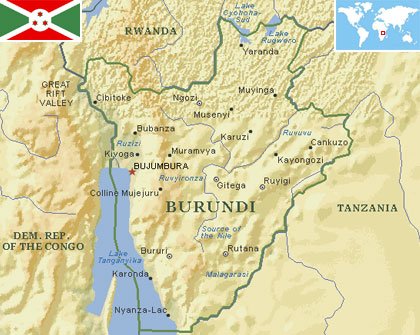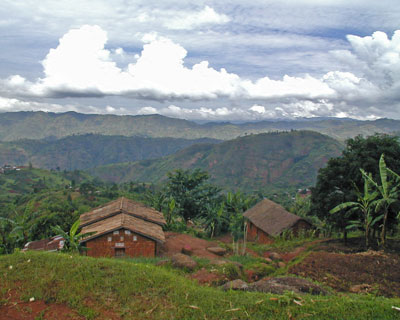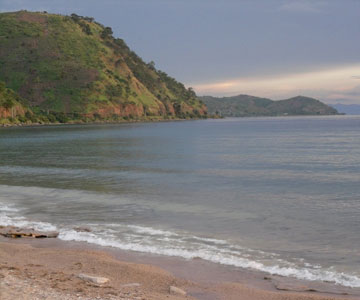Burundi
Country statistics

Land area: 9,903 sq miles (25,649 sq km)
Total area: 10,745 sq miles (27,830 sq km)
Population (2010 est.): 9,863,117 (growth rate: 3.5%); birth rate: 41.4/1000; infant mortality rate: 63.3/1000; life expectancy: 58.3; density per sq km: 338
Capital City: Bujumbura
Monetary unit: Burundi franc
Languages: Kirundi and French (official), Swahili
Ethnicity/race: Hutu (Bantu) 85%, Tutsi (Hamitic) 14%, Twa (Pygmy) 1%
Religions: Roman Catholic 62%, indigenous 23%, Islam 10%, Protestant 5%
Country introduction

Burundi is a landlocked country located in East-central Africa. It borders with Rwanda to its north, Tanzania to the east and south and to the west by the Democratic Republic of the Congo.
Burundi is very mountainous, with a Western range of mountains running north and south and continuing into Rwanda. The only land below 914 m (3,000 ft) is a narrow strip of plain along the Ruzizi River which forms the western border north of Lake Tanganyika. From the mountains eastwards, the land declines gradually, dropping to about 1371 m (4,500 ft) toward the south-eastern and southern border. The average elevation of the central plateau is 1706 m (5,600 ft).
The major rivers form natural boundaries for most the country. The Akanuaru and the Kagera separate Burundi from Rwanda along many sections of the common border. The Kagera and the Ruvuvu are important as the southern-most sources of the Nile. Most of Burundi's southern border is formed by the Malagarazi River.
The culture

Burundi is one of the ten least developed and illiterate countries in the world due to civil war, corruption and political instabilities.
The original inhabitants of the country were the Twa Pygmies who form only 1% of the population presently. Eventually the Hutus came in the 11th century followed by the Tutsis in the 14th century. Burundi culture thus was enriched by the contribution of all these ethnic groups. Hutu people were mostly interested in agriculture, while the Tutsi people dominated the government and the military power of the country. At the beginning of the 20th century Germany and Belgium occupied the region making Burundi and Rwanda an European colony known as Ruanda-Urundi. Even though these groups have been living together and share the same language (Kirundi), they are still separated due to their social differences. Political unrest occurred throughout the region, in part, because of the social differences between the Tutsi and Hutu, provoking civil war in Burundi throughout the middle 20th century.
Culture in Burundi includes rich dance forms and music. These performances can be seen in various ceremonies. One well known festival celebrated in the Burundian culture is the Sorghum festival.
During the 1972 genocide, many Burundians involved in higher education were killed, stalling written culture. This combined with the lower literacy rate have encouraged an adherence to Burundi's strong oral tradition, which relays history and life lessons through storytelling, poetry, and song. This is evident in kivivuga amazina, an improvisational poetry contest played by cattle herders, in which they boast their abilities or accomplishments.
Attractions & landmarks

Burundi has long been out of reach for the globe trotters due to its tumultuous political condition. However, now that it has achieved a stable condition to some extent, Burundi has again opened its door to the sublime mountains, charming lakes and magnificence of nature for the tourists.
Amid the plethora of natural attractions that Burundi offers, the capital city, Bujumbura itself is a place that will form the very center of the destinations to visit. Situated on the Lake Tanganyika shore this city enjoys a lovely surrounding that offers the travelers a combination of relaxation and entertainments making the trip really enjoyable.
Outside Bujumbura, there are several other destinations worth a visit including a number of exotic inland beaches. Saga beach is one of these which will no doubt offer a good time both with natural beauty and other entertainment opportunities.
The southern-most origin of the famous Nile River at Source Du Nil can be explored. Also, some time should be set aside to visit the Parc National de la Kibira to get acquainted with the ancient vegetation of Burundi.
Though scarred deeply by the prolonged tensions between the tribes, Burundi still retains the natural charms that will impress any traveler.